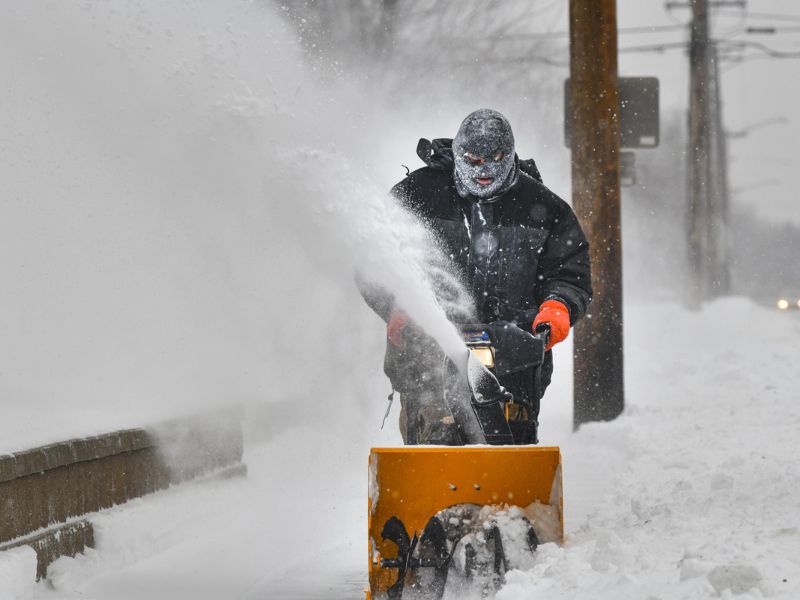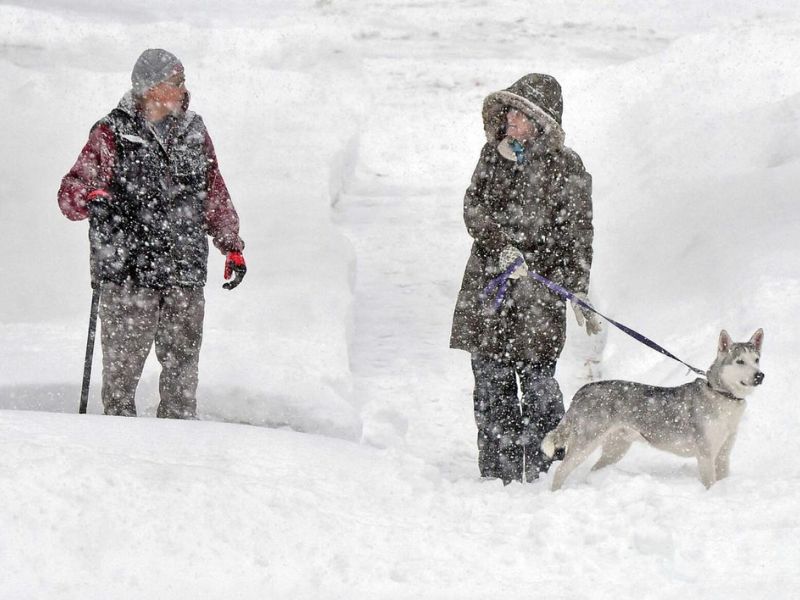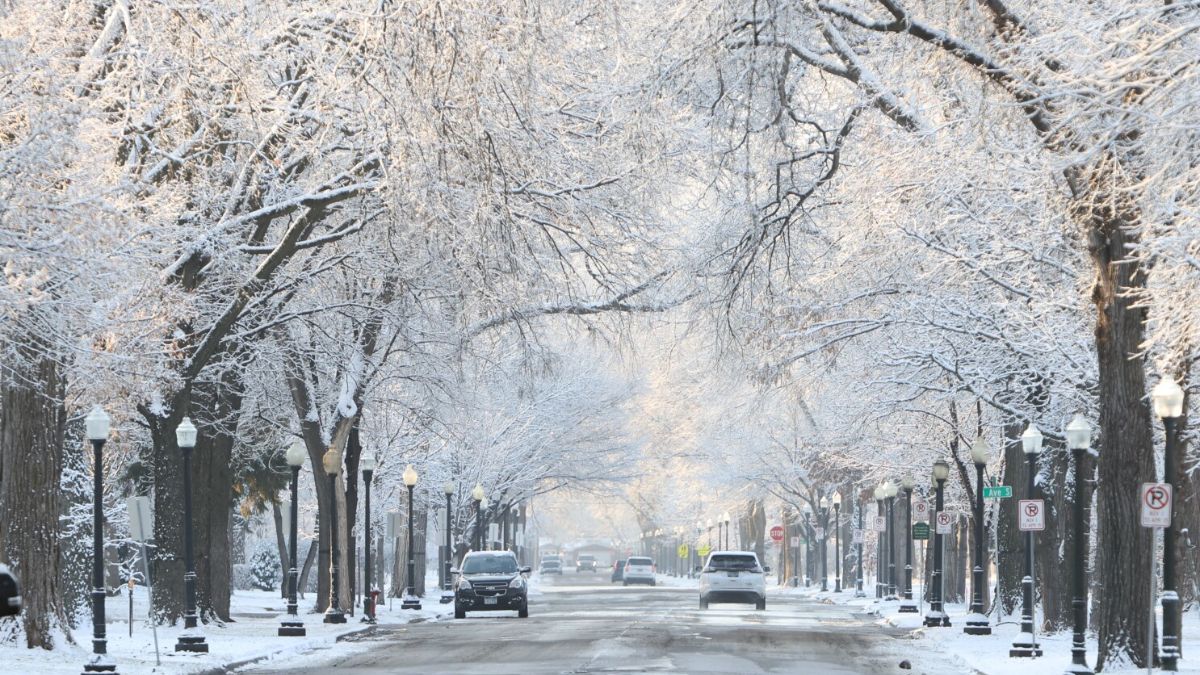Yes, it snows in North Dakota. North Dakota experiences significant snowfall during the winter months, making it one of the snowiest states in the United States. The region’s continental climate, with cold temperatures and moisture from nearby sources like the Great Lakes and Canada, creates ideal conditions for snow formation.
The winter season in North Dakota typically begins in November and lasts until March, during which residents can expect freezing temperatures and frequent snowfall. The eastern part of the state, closer to the Minnesota border, tends to receive more snowfall compared to the western part, which is more arid.
North Dakotans embrace the winter season and engage in various winter activities like snowmobiling, ice fishing, and cross-country skiing. The state’s scenic landscapes and abundance of snow create an ideal environment for outdoor enthusiasts during the colder months.
North Dakota, a state in the upper Midwest of the United States, is known for its vast plains, agricultural landscapes, and extreme weather conditions. The region experiences all four distinct seasons, with winters often being the most challenging due to the prevalence of snow and bitterly cold temperatures.
In this article, we will explore the snowfall patterns in North Dakota and how the state copes with the winter season.
Location Overview of North Dakota
North Dakota, located in the upper Midwest region of the United States, is a state known for its expansive plains, agricultural landscapes, and diverse natural beauty. Let’s take a closer look at the key aspects that define North Dakota’s location and characteristics.
North Dakota is situated in the northern part of the United States, bordered by Canada to the north. It shares its eastern border with Minnesota, its southern border with South Dakota, and its western border with Montana. The state covers an area of approximately 70,700 square miles.
Bismarck is the capital city of North Dakota. Fargo, located in the southeastern part of the state, is its largest city and a major economic and cultural hub. Other significant cities include Grand Forks, Minot, and Dickinson.
The topography of North Dakota is characterized by rolling plains, fertile prairies, and river valleys. The state’s terrain is relatively flat, with the eastern region being flatter compared to the more rugged terrain found in the western part of the state. The Missouri River flows through the central and western regions, providing a crucial waterway and scenic beauty.
North Dakota boasts several national parks and protected areas that showcase its natural beauty and diverse ecosystems. Theodore Roosevelt National Park, named after the former U.S. president who once resided in the area, is renowned for its rugged badlands and abundant wildlife.
North Dakota’s location in the northern United States, with its vast plains, diverse landscapes, and distinctive climate, makes it a unique state. Its rich natural resources, national parks, and cultural heritage add to its appeal, drawing visitors and residents alike to experience the beauty and opportunities this Midwestern state offers.
Geography and Climate of North Dakota
North Dakota experiences a continental climate with distinct four seasons. Summers are warm with temperatures often reaching the 80s to 90s Fahrenheit. Winters are cold and harsh, with temperatures dropping well below freezing. Snowfall is common during the winter months, especially in the central and eastern parts of the state.
North Dakota is situated in the northern part of the United States and shares its borders with Canada to the north. Its geographical location places it in a region that is susceptible to arctic air masses from the north, resulting in cold winters and abundant snowfall.
Historical Snowfall Record of North Dakota
North Dakota experiences significant snowfall during its long and cold winters. The snowfall amounts vary from year to year and across different state regions. For instance, some parts of eastern North Dakota, closer to the Red River Valley, tend to receive more snow than the western parts.

The historical snowfall records show that winters in North Dakota can bring substantial snowfall events, with some years experiencing above-average snow accumulation. The highest snowfall amounts are typically recorded during the months of December, January, and February, with occasional snow events extending into early spring.
The average amount of snowfall in North Dakota varies across the state due to its large size and diverse climate. Generally, North Dakota experiences a relatively snowy winter, with the most significant snowfall occurring from December to February.
In the eastern part of the state, particularly in cities like Fargo and Grand Forks, the average annual snowfall ranges from around 40 to 50 inches. These areas tend to receive more snow due to their proximity to the Red River Valley and the influence of moisture from the Great Lakes.
In central and western North Dakota, including cities like Bismarck and Minot, the average annual snowfall is somewhat lower, typically ranging from 25 to 40 inches. These areas have a more continental climate with less influence from moisture sources.
Winter Season & Snowfall Pattern of North Dakota
Snow is a common occurrence in North Dakota, particularly during the winter months. The state experiences a continental climate, with temperatures that can plummet well below freezing. This combination of cold air and moisture from the nearby Great Lakes and Canada creates ideal conditions for snow formation.
The snowfall patterns in North Dakota vary across different regions of the state. The eastern part, closer to the Minnesota border, tends to receive more snowfall compared to the western part, which is more arid. Cities like Fargo, Grand Forks, and Bismarck typically receive a significant amount of snowfall during the winter season.
The winter season in North Dakota generally starts in November and lasts until March. During this period, residents and visitors can expect to encounter freezing temperatures and frequent snowfall. The state is not only one of the coldest in the United States but also among the snowiest.
Blizzards are not uncommon in North Dakota during the winter season. These severe snowstorms are characterized by strong winds, reduced visibility, and heavy snowfall, making travel dangerous and sometimes even impossible. The state authorities take necessary precautions to ensure public safety during blizzards by issuing warnings and advisories.
Locations to Enjoy Snow in North Dakota
North Dakota offers several locations where you can enjoy the snow during the winter months. While it may not be as well-known for winter tourism as some other states, there are still plenty of opportunities for winter activities and snowy adventures. Here are some places to enjoy snow in North Dakota:

- Fargo
Fargo, the largest city in North Dakota, offers various winter activities such as ice skating, sledding, and snowshoeing. The city’s parks and recreational areas often have designated spots for winter sports.
- Bismarck
The capital city of North Dakota also has numerous outdoor recreational areas where you can enjoy the snow. Places like the McDowell Dam Nature Park and Fort Abraham Lincoln State Park are great for winter exploration.
- Theodore Roosevelt National Park
While it’s a fantastic place to visit year-round, the park’s scenic beauty takes on a special charm during winter when it’s covered in snow. Cross-country skiing and snowshoeing are popular activities here.
- Pembina Gorge
Located in northeastern North Dakota, the Pembina Gorge offers stunning winter scenery and opportunities for snowmobiling and cross-country skiing.
- Turtle River State Park
This state park, near Grand Forks, is a wonderful destination for winter activities such as snowshoeing and winter hiking.
- Bottineau Winter Park
This winter park in Bottineau, North Dakota, offers a range of activities, including downhill skiing, snowboarding, and tubing.
- Lake Metigoshe State Park
Situated in the Turtle Mountains, this state park provides opportunities for ice fishing, snowmobiling, and other winter sports.
- Cross Ranch State Park
Along the Missouri River, this park offers beautiful winter landscapes and opportunities for snowshoeing and winter hiking.
Remember that North Dakota’s winters can be quite cold, so be sure to dress warmly and take necessary precautions when participating in outdoor activities.
Factors Influencing Snowfall in North Dakota
Snowfall in North Dakota is influenced by several key factors. The state’s continental climate plays a significant role, characterized by cold winters and relatively dry air masses. The proximity to Canada allows Arctic air to surge southward, bringing colder temperatures and setting the stage for snowfall.
Additionally, North Dakota’s flat terrain and lack of significant geographic barriers allow these cold air masses to freely sweep across the region, leading to prolonged and sometimes intense snow events.
The presence of the Great Lakes to the east can also contribute to moisture availability, enhancing snowfall when cold air interacts with the relatively warmer lake waters. Furthermore, prevailing wind patterns can result in snowstorms and blizzards, especially during the winter months.
Overall, a combination of continental climate, proximity to Arctic air masses, flat terrain, and potential interaction with the Great Lakes significantly influences the amount and frequency of snowfall in North Dakota.
Conclusion
Snow is a common and significant part of winter life in North Dakota. The state experiences considerable snowfall and cold temperatures during the winter season, which can create challenges for daily activities.
However, North Dakotans are well-equipped and prepared to cope with the winter weather, and they also take advantage of the snow by engaging in various winter activities. Despite the cold and snow, the state’s residents demonstrate resilience and embrace the unique opportunities that winter brings to their region.
